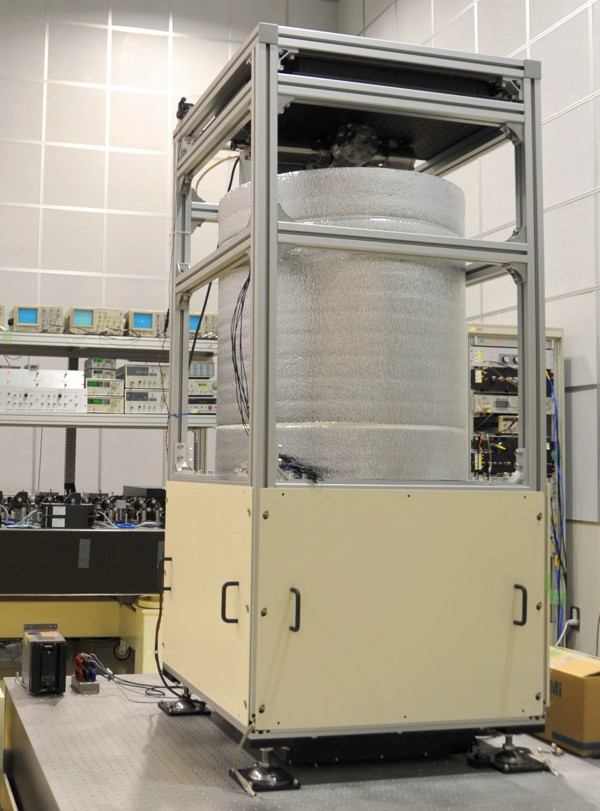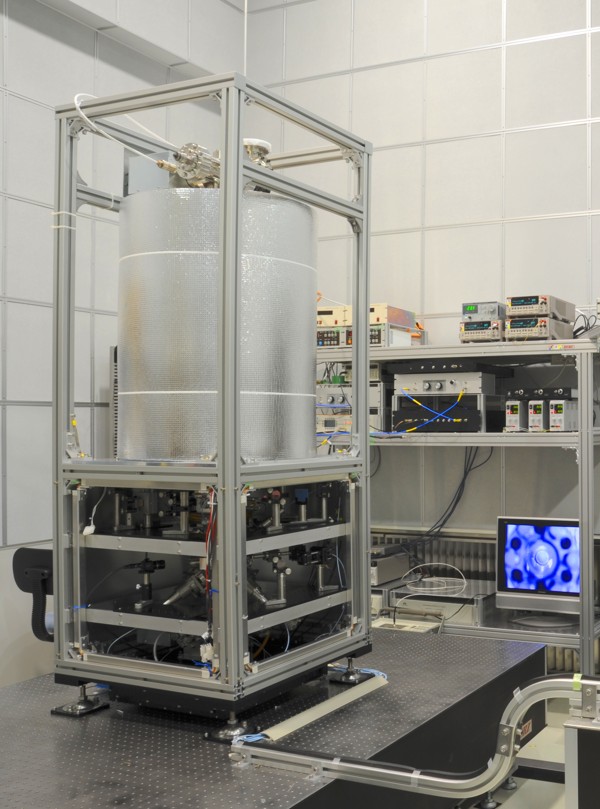Cesium Primary Frequency Standards
The second, symbol
The International Bureau of Weights and Measures

A primary frequency standard implements a frequency measurement according to this definition. However, there a few assumptions that are not explicitly stated above. The cesium atom is expected to be at rest, in an environment of absolute zero temperature (0K), with no magnetic or electric fields, no gravitational effects and no interactions with other atoms or molecules. However, it is not possible to observe a signal under these conditions in a real experimental system. Primary frequency standard are therefore designed specifically to minimize and precisely control the residual effects, so that they can be quantitatively evaluated and corrected for.
History of primary frequency standard development at NICT
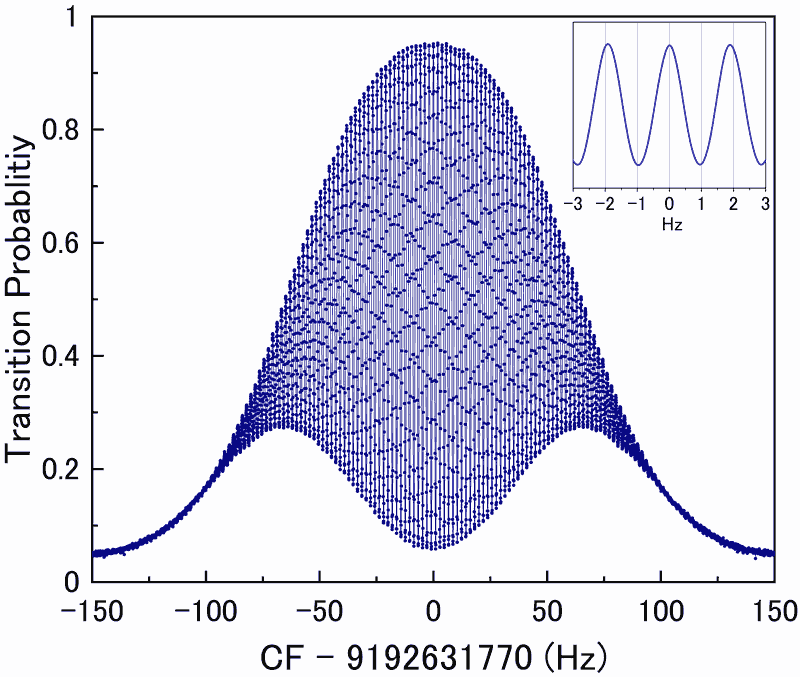
The performance of any atomic frequency standards depends on precisely determining the resonant frequency of the observed transition. In other words, they need to observe the atomic spectrum with a very narrow line width. Narrow line widths typically require that the atom is exposed to the electromagnetic signal for an extended time. The cesium atoms can not be held in a fixed position during the measurement, which makes such extended measurements problematic.
This problem was overcome with the development of Ramsey's method of separated oscillating fields, where the atom is only exposed to electromagnetic fields during two short periods. By carefully maintaining the signal's phase between the two exposures, this revolutionary method delivers the same resolving power as if the atoms were constantly exposed during the interval between the two interactions.
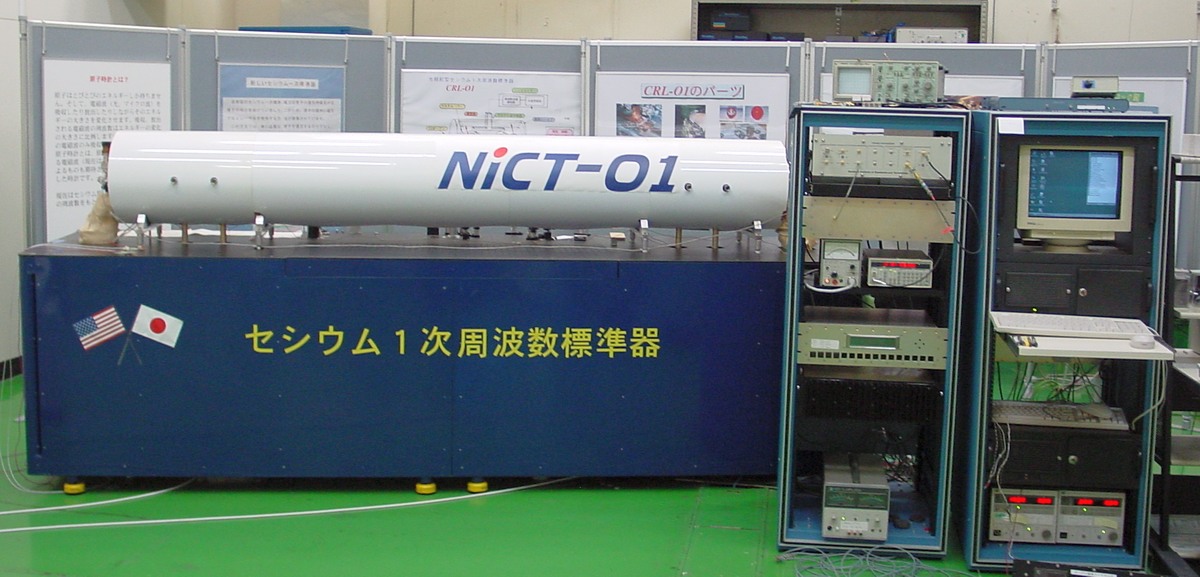
Ramsey's method was first applied to cesium standards of the hot-beam, magnetic-selection type, in which heated cesium atoms are emitted horizontally, exposed to electromagnetic waves in two cavities placed along their path, and then selected by a magnetic gradient according to the resulting atomic state. Subsequently improved by the addition of optical pumping, these hot beam clocks were the dominant primary frequency standards until atomic fountain clocks appeared.
During this time, NICT developed and operated the clock CRL-Cs1, of the magnetic selection type, and the optically pumped clock CRL-O1, which was later renamed NICT-O1. This clock participated in the determination of International Atomic Time (TAI) until 2006.
Atomic fountain frequency standards
In the hot beam standards, the atoms' velocity of around 200m/s places a fundamental limit on the available measurement time. The atomic fountain was developed to overcome this limit: Cesium atoms are captured and laser-cooled to an extremely low temperature of only few μK. The cloud of cooled cesium atoms is then launched upwards using laser light and allowed to freely fall back under the effect of gravity. By placing a microwave cavity in the path of the atoms, they will be exposed to electromagnetic waves once during the upwards passage and again during the downwards passage, creating the conditions required for a measurement by Ramsey's method. The path of the atoms launched upwards and then freely falling back down gives the atomic fountain its name.
This method allows for effective measurement times of close to one second, and all of the most accurate primary frequency standards today are fountain clocks.
NICT-CsF1 and CsF2
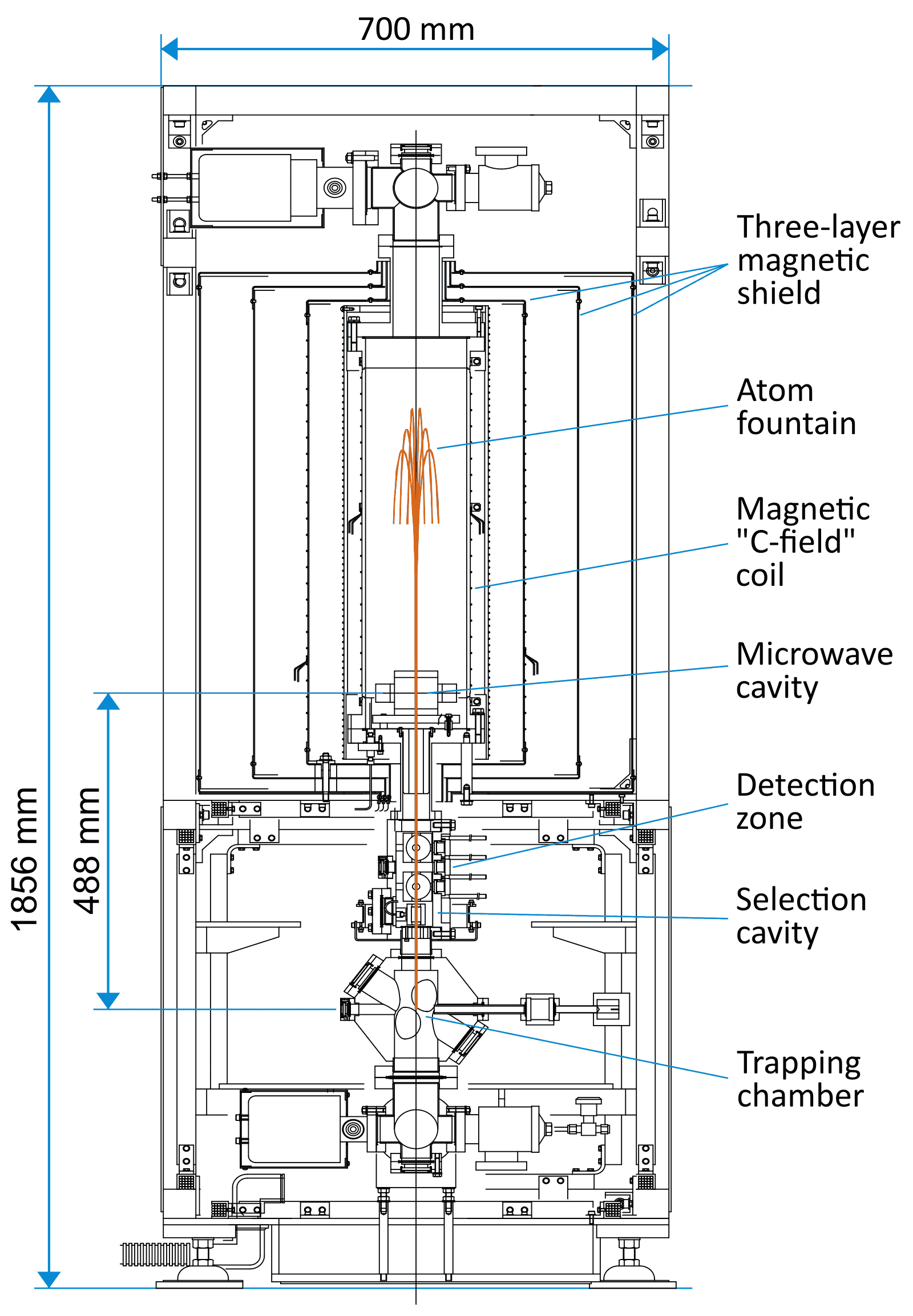
Primary frequency standards must be built to evaluate all conceivable causes of frequency shift. The Space-Time Standards Laboratory developed an original atomic fountain primary frequency standard as a successor to the hot-beam standards, integrating vacuum, laser and control technologies to provide robust and reliable operation.
The first prototype is now on display in the
exhibition room of NICT headquarters. It was used to identify issues and challenges, and over multiple design changes the operational fountain clock NICT-CsF1 was completed. After evaluating more then ten causes of frequency shifts, it achieves an accuracy equivalent to less than one second time error in 20 million years of operation. NICT-CsF1 was the first standard to be inspected by the primary frequency standards working group, composed of specialists from the major standards organizations of the world. It has been internationally recognized as a primary frequency standard, and thus allowed to contribute to the correction on TAI since 2006.
of NICT headquarters. It was used to identify issues and challenges, and over multiple design changes the operational fountain clock NICT-CsF1 was completed. After evaluating more then ten causes of frequency shifts, it achieves an accuracy equivalent to less than one second time error in 20 million years of operation. NICT-CsF1 was the first standard to be inspected by the primary frequency standards working group, composed of specialists from the major standards organizations of the world. It has been internationally recognized as a primary frequency standard, and thus allowed to contribute to the correction on TAI since 2006.
Since then, the second standard NICT-CsF2 was constructed to increase operational availability. The new design uses a different configuration of the trapping lasers, and enables increasing the accuracy by almost one order of magnitude. Comparing CsF1 and CsF2 also provides better opportunities to evaluate systematic effects and frequency shifts.
Publications
1.
M. Kumagai, H. Ito, M. Kajita and M. Hosokawa,
Evaluation of caesium atomic fountain NICT-CsF1,
Metrologia 45 139 (2008).
(2008).


